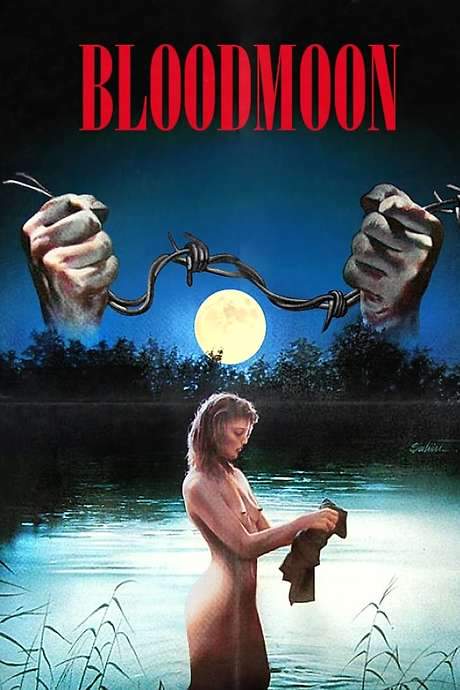
Footprints on the Moon
Year: 1975
Runtime: 96 mins
Language: Italian
Directors: Luigi Bazzoni, Mario Fanelli
Ecstasy beyond passion, possession beyond lust—ultimate fulfillment. Alice, a translator, sees reality merge with recurring nightmares while dealing with recent memory loss. A postcard leads her to Garma Island, where locals recognize her. She doubts her identity and the meaning of a dream about an astronaut abandoned on the moon.
Warning: spoilers below!
Haven’t seen Footprints on the Moon yet? This summary contains major spoilers. Bookmark the page, watch the movie, and come back for the full breakdown. If you're ready, scroll on and relive the story!
Footprints on the Moon (1975) – Full Plot Summary & Ending Explained
Read the complete plot breakdown of Footprints on the Moon (1975), including all key story events, major twists, and the ending explained in detail. Discover what really happened—and what it all means.
Alice Cespi, Florinda Bolkan, a translator for the Italian government, wakes in a fog of memories and a phone ring that drags her into a day she cannot trust. The film opens with a chilling sequence: a spacecraft lands on the moon, an ominous flight controller named Blackmann issues orders, and an unconscious astronaut is dragged out and abandoned on the surface. When Alice receives a call from her friend Mary, asking for a ride to the airport, she sets off through a city that feels suddenly unfamiliar. She has been haunted by a nightmare about a movie called Footprints on the Moon, the story of an astronaut left behind—a memory that starts to bleed into her waking life as she discovers a two-day gap in her own timeline. The rhythm of her world tilts as she stumbles between a Tuesday morning that never seems to arrive and a Thursday that seems impossibly distant, the sense of being watched gnawing at her as a private, brittle paranoia grows.
Arriving in Garma, a sunlit island that bears the weight of a puzzling past, Alice meets Henry, Peter McEnery, a courteous man with a bandaged hand who seems to know more than he lets on. The town’s atmosphere is thick with rumors and echoes of the past: a young visitor named Paula Burton, Nicoletta Elmi, appears on the scene along with a predecessor named Nicole, and a local Mrs. Heim, Lila Kedrova, is quick to observe how closely Alice resembles someone who once walked these shores. Paula’s presence marks the first thread of a growing tapestry of coincidence and memory. Alice also encounters a shopgirl and other townsfolk who recall transactions and appearances that match her own wardrobe and belongings, including a bloodstained dress and a distinctive peacock-stained window that haunt her visions. The sense that something from the past is intruding on the present deepens as she follows Paula into the woods, uncovering burned clothes, scattered papers, and a stray dog playing with a long red wig—a tableau that suggests a hidden history she cannot yet name.
On the island’s shore and in its streets, the lines between dream and reality blur. In Garma’s boutique windows and general stores, clerks confirm that a woman matching Alice’s description bought a fatal, identifiable item—a pair of scissors—that she then pockets, as if to defend herself from the memories she cannot escape. At a seaside drink with Henry, their conversation slides into the uncanny; he presses her to reveal what she knows, as if he has long waited for her to speak. The locals’ behavior grows more unsettling, with hints that the town has seen someone like Alice before, someone who moved with a memory she cannot own. The eerie pattern persists when a wallet goes missing from Alice’s possessions, only to reappear later in a note left by Mrs. Heim that implies she knows more about Alice’s previous presence on the island. A missed last boat and a late-night orchestra performance intensify the sense that Garma is a place where time loops back on itself, inviting a dangerous reconsideration of who Alice truly is.
Haunted by the two-day absence and the recurring image of the peacock-stained window, Alice’s fear reaches a fever pitch and culminates in a collapse of memory that sends her into a seaside mansion where a familiar room awaits her. In this space, the same peacock window looks out over the sea, and the missing earring reappears in a bathroom cupboard. Henry enters, not as an adversary but as someone who has tracked her through the labyrinth of her own mind. He reveals a long, intimate history: as teenagers they shared a fleeting afternoon on Garma, a memory she cannot fully remember. He theorizes that the stress of her high-stakes translator job, coupled with the haunting film she keeps replaying, triggered a dissociative episode in which she adopted the alias of “Nicole” and wandered back to a place that once held happiness. Henry explains that his role was to help her recover, not to trap her, and that his earlier actions—like remaining by her side and offering a chance to remember—stem from care rather than conspiracy. He hopes to guide her return to a coherent memory without forcing the truth, but the moment Alice realizes the consequences of this revelation, fear erupts into action.
In a tense confrontation, Alice ends up slashing Henry with the very scissors she had acquired earlier, a violent outburst that signals the fragility of her grip on reality. She treats his confession as a threat, believing she is being hunted by the scientists from Footprints on the Moon and by a program that would capture her again. Realizing the danger of the situation, she retreats to the shore, where nurses arrive and pursue her down the beach. A chilling title card closes the sequence, revealing that she is currently held in a secure hospital, a fate that seems at once tragic and inevitable given the visions and the memory fragments that refuse to settle.
Throughout the journey, the story threads together memory, illness, and haunted landscapes, weaving a tale that remains resolutely grounded in a character’s fragile sense of self. The island Garma functions as both a sanctuary and a trap, a place tethered to a memory that refuses easy explanation. The interplay between dreamlike sequences and a documentary-like sense of observation creates a mood that is at once pristine and unsettling, inviting viewers to question the reliability of perception. The motifs of the bloodstained dress, the torn postcard, the matching scissors, and the peacock window recur as tangible symbols of a mind striving to reconstruct a story out of fragments rather than a single, linear truth. The film’s atmosphere—cool, methodical, and slightly unnerving—persists even as the drama moves toward its tragic, inevitable conclusion: a woman who recognizes the danger of memory and the peril of a mind that cannot distinguish real danger from imagined terror, ending up under care in a secure facility while the enigma of Garma remains just out of reach.
Last Updated: October 09, 2025 at 14:09
Unlock the Full Story of Footprints on the Moon
Don't stop at just watching — explore Footprints on the Moon in full detail. From the complete plot summary and scene-by-scene timeline to character breakdowns, thematic analysis, and a deep dive into the ending — every page helps you truly understand what Footprints on the Moon is all about. Plus, discover what's next after the movie.
Footprints on the Moon Timeline
Track the full timeline of Footprints on the Moon with every major event arranged chronologically. Perfect for decoding non-linear storytelling, flashbacks, or parallel narratives with a clear scene-by-scene breakdown.

Similar Movies to Footprints on the Moon
Discover movies like Footprints on the Moon that share similar genres, themes, and storytelling elements. Whether you’re drawn to the atmosphere, character arcs, or plot structure, these curated recommendations will help you explore more films you’ll love.
Explore More About Movie Footprints on the Moon
Footprints on the Moon (1975) Scene-by-Scene Movie Timeline
Footprints on the Moon (1975) Movie Characters, Themes & Settings
Footprints on the Moon (1975) Spoiler-Free Summary & Key Flow
Movies Like Footprints on the Moon – Similar Titles You’ll Enjoy
Sleepless (2001) Full Summary & Key Details
The Dark Side of the Moon (1990) Film Overview & Timeline
Bloodmoon (1990) Ending Explained & Film Insights
The Moon in the Gutter (1983) Full Summary & Key Details
Bloody Moon (1981) Ending Explained & Film Insights
A Blade in the Dark (1983) Ending Explained & Film Insights
The Black Moon (1989) Movie Recap & Themes
Blood and Lace (1971) Story Summary & Characters
Eye in the Labyrinth (1972) Full Summary & Key Details
Killer’s Moon (1978) Full Movie Breakdown
The Possessed (1965) Full Summary & Key Details
The Burning Moon (1992) Plot Summary & Ending Explained
Night of the Dark Full Moon (1972) Spoiler-Packed Plot Recap
The Bloodstained Butterfly (1971) Film Overview & Timeline
Thirsty for Love: Sex and Murder (1972) Plot Summary & Ending Explained

















